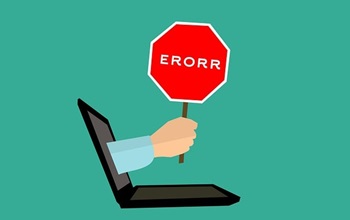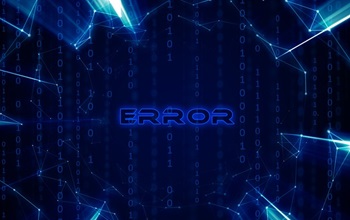
In the fast-paced world of enterprise resource planning, keeping your SAP systems up-to-date is crucial. SAP Patch Management is a systematic approach to applying updates that fix bugs, improve performance, and enhance security. However, the process can be fraught with challenges, from compatibility issues to unforeseen errors. The goal of this blog is to explore how you can ensure error-free updates, keeping your SAP environment running smoothly and securely.
Understanding SAP Patches
Before diving into best practices, it’s essential to understand the different types of SAP patches and their roles. SAP patches come in various forms, including:
• Support Packages: These are collections of corrections and enhancements provided periodically. They help keep your system aligned with the latest SAP developments.
• Kernel Patches: These updates target the SAP kernel, the core component of the SAP system that handles communication between the application and the operating system.
• Security Notes: Focused on addressing security vulnerabilities, these patches are critical for protecting your system from threats.
The SAP Service Marketplace is your go-to platform for obtaining these patches. It provides access to a wealth of resources, including documentation and tools to manage your patching process. It’s important to note that patches differ from upgrades; while patches are aimed at fixing and improving existing functionality, upgrades involve moving to a new version of the software with significant changes and new features.
The Importance of Patch Management in SAP
Effective patch management is not just about keeping your system current; it’s about ensuring its security, performance, and reliability. Here are some key reasons why patch management is vital:
• Security and Compliance: Regular patching is crucial for protecting your system from vulnerabilities that could be exploited by malicious actors. Staying compliant with industry regulations often requires timely application of security patches.
• Performance and Functionality: Patches can introduce performance improvements and new features, helping your system run more efficiently and providing users with enhanced capabilities.
• Preventing Downtime: Unpatched systems are more prone to errors and failures, leading to unexpected downtimes that can disrupt business operations.
Consider a scenario where a critical security patch was not applied in time, resulting in a data breach. The fallout from such incidents can be severe, underscoring the importance of a proactive patch management strategy.
Best Practices for Error-Free SAP Patch Management
To ensure that your SAP patch management process is smooth and error-free, it’s essential to follow some best practices:
• Regularly Scheduling and Planning for Patch Updates: Establish a regular schedule for reviewing and applying patches. This proactive approach helps in avoiding the accumulation of pending updates, which can be overwhelming to address all at once.
• Conducting Thorough Impact Analysis: Before applying any patch, perform an impact analysis to understand how the update will affect your current system. This includes checking for compatibility with existing customizations and integrations.
• Establishing a Robust Testing Environment: Create a dedicated testing environment that mirrors your production system. This allows you to test patches thoroughly before deployment, ensuring they don’t cause unforeseen issues.
• Documenting and Maintaining Patch Logs: Keep detailed records of all patches applied, including their purpose, date of application, and any issues encountered. This documentation is invaluable for troubleshooting and auditing purposes.
• Engaging in Continuous Monitoring and Feedback Loops: After applying patches, continuously monitor the system for any anomalies. Solicit feedback from users to identify and address any issues promptly.
Utilizing AI and Automation in SAP Patch Management
Leveraging AI and automation can significantly enhance the efficiency and reliability of your SAP patch management process:
• Predicting Potential Issues: AI can analyze historical data to predict potential compatibility issues or conflicts that might arise from applying a specific patch. This predictive capability allows for preemptive measures to mitigate risks.
• Automated Patch Deployment: Automation tools can streamline the patch application process, reducing the manual effort involved and minimizing the chances of human error. Automated scheduling ensures that patches are applied during optimal times to minimize disruptions.
• Automated Testing: Integrating automated testing tools can expedite the validation process, ensuring that patches are thoroughly vetted before they go live. This helps in identifying and resolving issues quickly.
Several AI-driven solutions are available in the market, offering comprehensive features for managing and automating patch deployment. Utilizing these tools can save time, reduce errors, and enhance overall system stability.
Case Study: Successful SAP Patch Management
Consider the case of a global manufacturing company that successfully revamped its SAP patch management strategy. Facing frequent system downtimes and security vulnerabilities, the company decided to overhaul its approach to patch management. Here’s how they did it:
• Assessment and Planning: The company conducted a thorough assessment of its current patch management processes and identified key areas for improvement.
• Implementing Best Practices: They adopted the best practices mentioned earlier, including regular scheduling, impact analysis, and robust testing.
• Leveraging AI and Automation: By integrating AI-driven tools, they automated patch deployment and testing, significantly reducing the time and effort required for these tasks.
• Continuous Improvement: The company established a feedback loop, continuously monitoring the system and making adjustments based on user feedback and performance metrics.
The results were remarkable. The company saw a 50% reduction in system downtimes and a significant improvement in overall system security and performance. This case study highlights the tangible benefits of a well-executed patch management strategy.
Common Pitfalls and How to Avoid Them
Even with a robust patch management strategy, certain pitfalls can lead to issues. Here are some common pitfalls and tips on how to avoid them:
• Overlooking Compatibility Issues: Ensure that patches are compatible with your current system configuration and customizations. Conduct thorough compatibility checks during the impact analysis phase.
• Ignoring Regular Maintenance Schedules: Skipping scheduled maintenance can lead to a backlog of patches, increasing the complexity and risk of errors. Stick to a consistent maintenance schedule to keep your system up-to-date.
• Skipping the Testing Phase: Deploying patches directly to the production environment without adequate testing can cause disruptions. Always test patches in a controlled environment that replicates the production setup.
• Inadequate Documentation: Failing to document patching activities can lead to difficulties in troubleshooting and auditing. Maintain comprehensive logs of all patch-related actions.
By being aware of these pitfalls and taking proactive measures to address them, you can significantly reduce the risk of issues during the patch management process.
Conclusion
In conclusion, effective SAP patch management is critical for maintaining the security, performance, and reliability of your SAP systems. By understanding the different types of patches, recognizing the importance of regular updates, and following best practices, you can ensure a smooth and error-free patch management process. Leveraging AI and automation can further enhance your strategy, making it more efficient and reliable.
Remember, staying proactive and vigilant in your patch management efforts can prevent potential issues, minimize downtime, and keep your SAP environment running optimally. With the right approach and tools, you can navigate the complexities of SAP patch management with confidence.
Sign up for Free Essentials Plan.
Get 20,000 tokens every month — no credit card required.
 February 15, 2024
February 15, 2024
Recent Blogs
-
SAP Transaction Code Guide: Instantly Master Any SAP T-Code
-
Download the SAP Consultant’s Time-Saving Playbook
-
SAP Error Assistant: Outperforming ChatGPT for Real SAP Solutions
-
A Day in the Life of an SAP Security Consultant: Humor and Hustle
-
SAP Database Error (DBIF_RSQL_SQL_ERROR): How to Diagnose and Fix It


